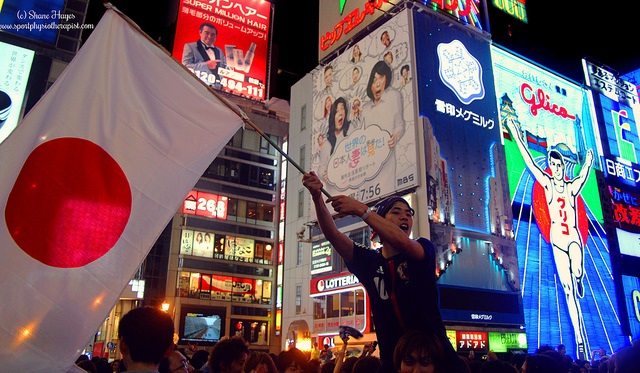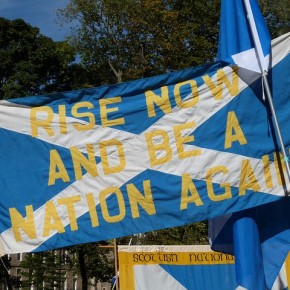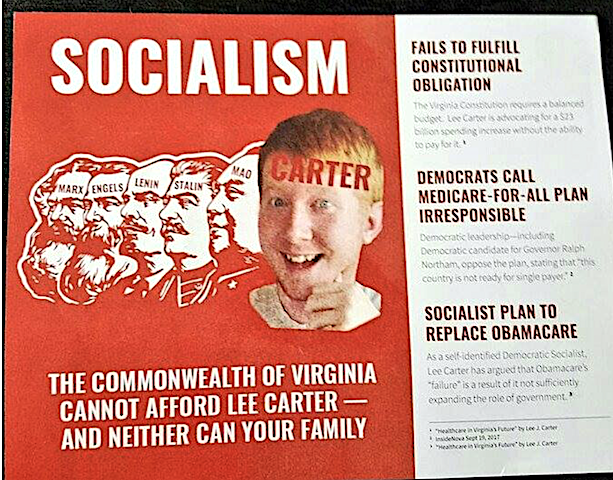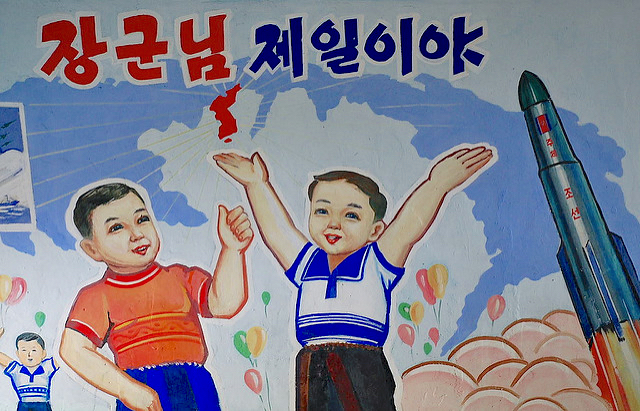The debate was about who knew Japan better: the “Japan Crowd” or the “Lobby,” on the right, or the “New Dealers” in the SCAP. The story of the US Occupation from, 1945 to 1952, is the story of these camps’ shared assumptions about the limitations of the Japanese psyche. In the end, the conservatives won, disproportionately influencing Japanese politics, and America’s imperial administration.
How would Japan change for the better? According to progressives – the New Dealers, “China Hands,” and other internationalists who had only limited prewar experience with Japan – it was not by accepting the words of the country’s prewar leadership at face value. This brought them into conflict with former Ambassador Joseph Grew and his more business-minded associates, in what became know as the “Japan Lobby” after his retirement. They were ideologically very close to these nobles, prewar politicians, and zaibatsu families.
Except for business, most other areas of possible cultural exchange were anaemic, so it was only logical that American skeptics of the New Deal at home, like Grew, and diplomat Joseph Ballantine, also sceptical of the “common” Japanese person’s capacity for free thinking, came to share the views of Japan’s ruling class that any substantial social reforms would bring anarchy. They believed that the New Deal framework was not suitable to Japan, particularly its reliance on American democracy and labor standards.
This was portayed in typically racist terms. Frank Capra’s Know Your Enemy: Japan (1945) posited the conundrum the would-be occupiers faced this way: the film began with a statement on the Japanese-American 442nd Infantry Regiment’s service in Europe. These volunteers “have been educated in our schools and speak our language, and a great many of them share our love of freedom and our willingness to die for it,” unlike the “Japs in Japan” who had no idea what any of those words meant, the title card warned viewers. There was something inherently American about these values that Asians couldn’t possibly understand.
The Chicago Sun’s Mark Gayn believed that there was “a new democracy-in-the-making of which Americans could be proud” of in Japan. That pride was an importance component of the New Dealers’ ideology: in the American Century to come, the U.S. would lead the “free world” and modernize societies in a contest against communism. “Americans’ faith in improvisation and in their native ingenuity, so recently proven in wartime production and combat, was strong,” wrote SCAP economics officer Theodore Cohen in his own memoir.
As Gayn wrote, “it was an exhilarating experience to talk to some of the younger officers” because they “blueprinted the democratization of Japan … had written the noble directives giving land to the sharecroppers, purging government of war criminals, assuring the Japanese people of basic human liberties.” Even SCAP personnel who were skeptical of the New Deal at home found appeal in the challenge of designing a better world.

It is little wonder, then, that FEC-230, the product of a special economic mission to Japan that formed the basis for SCAP economic policy until 1947, emphatically recommended the application of American anti-monopoly laws to the zaibatsu. “Japan held regenerative possibilities for Americans,” writes Naoko Shibusawa in her book America’s Geisha Ally: Reimagining the Japanese Enemy, “with the potential to reconfirm the universality of Western civilization’s principles and the wisdom of its political and social organization.”
The attitudes of the War Department film Our Job in Japan (1945), which was regarded in the Department as being too soft on the Japanese, is an excellent example of the “regenerative” attitude. Distributed to Americans on their way to an SCAP posting in 1945, the film promised “a better world shall emerge out of the blood and carnage” if the US could “figure out 70 million Japanese” and “prove” to them that the American way was best.
There was, among the Japan Crowd’s critics, a pervasive sense that the Japanese could be educated to embrace the values of New Deal liberalism. The zaibatsu that had underwritten the war economy and Japanese colonialism abroad were frequently described in aggressive language that evoked the interwar denunciations of “merchants of death” and older, Gilded Age “robber baron” rhetoric. That latter lens is how America’s viceroy, General Douglas MacArthur, saw the zaibatsu as well. He was no Smedley “War Is a Racket” Butler, and he was not fond of the New Dealers, but he distrusted the zaibatsu, describing their executives as “born and bred” tyrants.
Despite his sensitivity to good press coverage, MacArthur clashed with the ascendant Japan Lobby in the late 1940s over the FEC-230 zaibatsu deconcentration program that it opposed. Despite his moments of weakness and contradiction, the general viewed the program as both pro-capitalist and pro-peace. And in private, he called the members of the informal Japan Lobby “fascists”. They did not understand that these smiling Japanese faces, under their top hats and silk ties, would restart their war machines if he even slipped up for a moment. In his view, a new economic system, which respected the workers, would be necessary to build the foundations for a Japanese middle class, and with it, ease social tensions.
T. A. Bisson, briefly a member of SCAP and already a popular academic on Japan, agreed to some extent. Japan had been a feudal society in his view, and as he had been arguing since the 1930s, the whole system created under the Meiji Restoration was to blame for WWII. The conflict was not an aberrant period, but the logical conclusion of Japanese history to that date. What democracy had existed was an elaborately faked Westminster-style parliament that was actually led by militarists, and raised on unsteady feudalistic grounds. It was somewhat similar to the Weimar Republic’s “republic without republicans,” and eventually collapsed. Bisson articulated a view that the Japanese social and economic system needed to be overhauled if this was to be prevented, especially since some institutions hadn’t really changed since the Tokugawa Shogunate.
MacArthur, who felt he understood the Japanese psyche better than anyone in the world, was actually somewhere in the middle between the Grews and Bissons on the economic question. He believed that Westerners needed to move towards rectifying past inequalities, but also believed that Asia was culturally and politically backwards. “If minor elements of Japanese society are unable to exercise such restraint and self-respect as the situation and conditions require,” he lectured during a national strike in May 1946, “I shall be forced to take the necessary steps to control and remedy such a deplorable situation.” Like many other internationalists of the 1940s, MacArthur felt that Asia was in flux, and that the US had to pay far more attention to events there so as to uplift the natives and dissuade them from going communist.

MacArthur bought into the pro-zaibatsu worldview at times, such as when he had many suspected communists in the Japanese labor movement blacklisted, and publicly expressed opposition to the planned 1947 general strike due to the role of the Japanese Communist Party in organizing it. But not at others, such as when he doggedly stuck to FEC-230 at the cost of favorable news coverage in the US press and insisted on land reforms or ending peerage. Though there were signs he was losing patience with organized labor before 1947, MacArthur had no actionable intelligence that the local communists were taking orders from the Russian mission in Tokyo. This began to change with the general’s biggest strikebreaking action of the Occupation, which took place on January 31, 1947. Interestingly, later crackdowns weren’t nearly as severe, even when China had fallen to the CCP, and when Kim Jong-Il’s armies invaded South Korea.
The reason was mainly political. MacArthur’s imperial rescript of January 31st came on the heels of major press attacks on policies that were at friendly to labour and Japanese commoners. The tide had turned against unionization, which the New Dealers felt was their most democratic and lasting achievement in Japan. Some even believed that MacArthur was laying the groundwork for a communist revolution, and that New Deal liberalism was enabling the Bolsheviks. With the 1948 presidential election coming up, the general felt vulnerable to these charges, so he clamped down hard on the general strike, which never happened, much to the chagrin of the Japanese labor movement.
MacArthur had these concerns when critical reports were published in American periodicals such as Newsweek as early as 1946, and after a spate of strikes in the winter of 1946–7. Following Truman’s reelection, the “loss” of China in 1949 and the outbreak of the Korean War in 1950 only made things worse. A “Red Purge” occurred around this period, driving 20,000 Japanese from there workplaces. It turned out to be a sign of the changing winds. Far more people were targeted by this campaign up to 1950, and for longer thereafter, than were by the purging of wartime officials from 1945-8. The new view, as backed by the Dulles brothers, was that what mattered after VJ Day was Japan’s instrumentality in the Asian balance of power. New Dealers revolted against this view, but they were increasingly departing, either by choice or through semi-official pressure.
In 1954, Bisson lamented “the Occupation authorities never conducted an operation seriously designed to shift political power into the new hands,” yet nonetheless expressed hope that SCAP’s reforms had at last brought the Japanese worker into the 20th century. Bisson, and most of the official memoirists write of these last months in relatively gentle language. Mark Gayn, though, did not. He disgustedly remarked that the US investors coming to Japan all congregated in the same hotel, “talking the international language of cartels.” The officials who supported this were “puny in their concept of democracy,” just as timid as the prewar appeasers. But for the Japan Lobby, it was the Japanese were “puny” in their democratic maturity, far too easily swayed by communism.
The end result of their loss, the New Dealers lamented, was not just a failure of the US to help Japanese progressives, which was insulting enough, but a failure of the US to be more American. “The new image of America [in Asia] is that of a powerful and rich and greedy nation, allied with reaction,” Gayn bitterly concluded in his Japan Diary. This, then, was the worst failure of the Occupation: the Japanese who had digested Western values. Political parties, parliamentary debates, a college education, public libraries, the free press were betrayed – all because the New Dealers could not convince Washington that their wards had learnt the art of civilization from them after 1945. As the United States began working with governments all over the Pacific, this core division about what hegemonic politics it would practice continued to arise. The consequences of this are well-known, especially as the US turned its eyes toward Southeast Asia.
Photographs courtesy of Shane Hayes and D. Bjorn. Published under a Creative Commons License.





